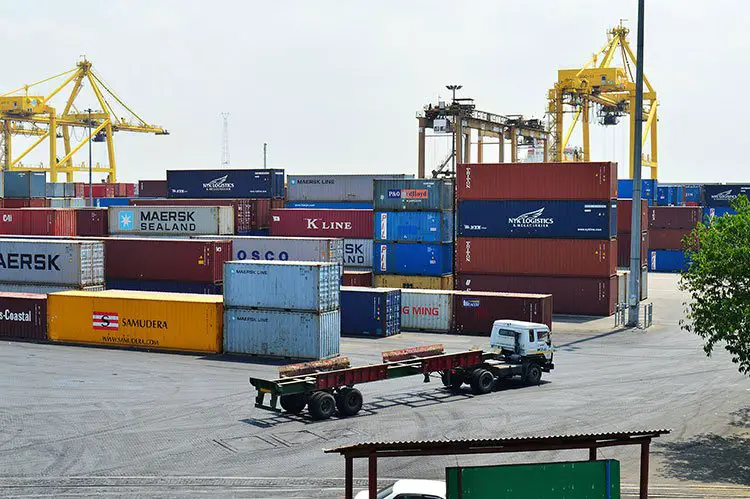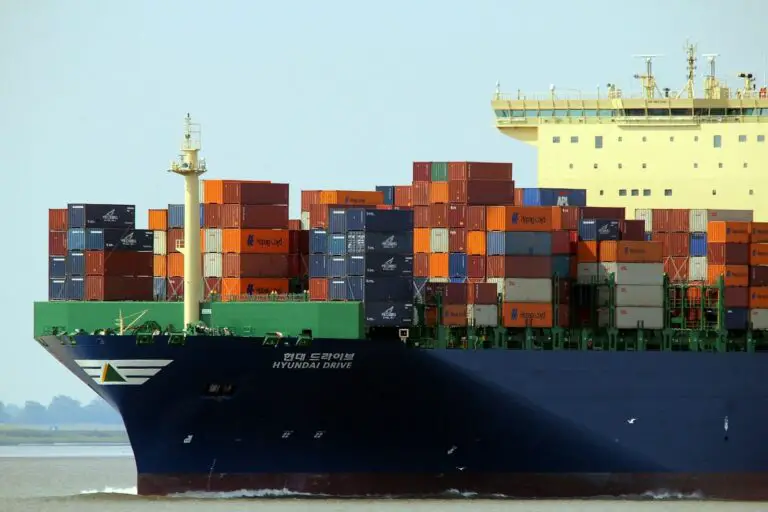What is Dredging?

What is Dredging?
Dredging refers to the process of excavation of sediments from the bottom or sometimes the banks of rivers, lakes, harbors, and other water bodies. The material gathered is then deposited to different locations.
Special equipment called a Dredge is used to loosen and then suck out the sediment and debris.
Dredging keeps waterways and ports navigable. Many times, it is also done to protect coasts, redevelop coast, or to reclaim the land.
What Is Dredging Used For?
Dredge removes sediments, pollutants, and debris, and hence, its applications are manifold.
1) Creation & Maintenance of Waterways
New waterways are built to improve connectivity with the new trading hubs. Dredging allows cargo ships of all sizes to dock and not run aground. Over time, waterways can get choked with sediments and trash if not dredged at regular intervals. Keeping the depth of waterways at optimum levels is crucial to prevent flooding and also allow passage of ships.
2) Land reclamation
Many times, new land is created from the ocean, rivers, and lakes by filling it with material collected by dredging.
3) Environmental Dredging to Keep Waterbodies clean
Dredging is carried out in rivers, lakes ponds and shallow seas. Waste deposits from factories and residences get accumulated at the bottom of seas and freshwater areas. It is known as sewage sludge. Sometimes there are accidental or deliberate chemical spills. These need to be removed from time to time. Otherwise, they pollute the water leading to the death of many aquatic plants and animals.
4) Beach Nourishment
Beaches get eroded both due to human activity like sand mining as well as natural causes like storms and wave actions. To replenish this sand dredging is sometimes done where there is excess and then that sand is deposited here. Beaches have many protective functions, primarily the prevention of floods. Thus maintaining the beach is necessary. Likewise, if a certain land is to be used for constructing a building and happens to be at a lower level than the surrounding land dredging helps to elevate such lands.
5) Construction
It is used in various industries as well. The sand and gravel generated from dredging are used in construction industries. Especially in East Asia research is going on towards utilizing dewatered sediments for the production of concrete and construction block. However, the high percentage of organic matter present in them is proving it to be a difficult task.
6) Mining
Dredging is also done to collect gold, diamonds, and other precious items.
7) Oyster Harvesting
In certain parts of the world, oyster harvesting is carried out where the saltwater can sustain oyster beds. A heavy metallic device is used to scoop up oysters as it is dragged across the bottom of the water body. These are then shipped to places where they are processed and sold for various purposes.
Without dredging, industries across the globe would suffer. Most of the goods that transported from one place to another are taken on ships. If the water body becomes shallow, the ships will not be able to move through the water. Recreational activities would also be limited to using small boats only, thereby affecting a wholly different yet relevant industry. Dredging helps in keeping the water levels deep and widens the waterway which in turn helps in the movement of larger water vessels. Even new harbors and berths are created, and existing ones are deepened.
Methods of Dredging
Different types of dredging machines fulfill different purposes of dredging. They include suction, jet lift, airlift, bucket, clamshell, backhoe, etc.
1) Suction
The suction type dredges having no tool at the tip of the suction pump is the most common dredging tool in use. The suction dredgers can be further subdivided into a trailing, cutter, and auger.
The Trailing Suction Hopper Dredger (TSHD) trails its suction pipe while working. The pipe is fitted with a dredge drag head.
The cutter suction dredger (CSD) comes equipped with a cutting mechanism at the suction inlet which helps it loosen the bed material while dredging.
The auger suction is more or less like the CSD except for that the cutting tool rotates while disturbing the bed material. These are primarily used for waste treatment and sludge removal.
2) Jet Lift Dredger
It is an advanced dredging method in which water is injected at high speed to pull the water along with the sediments into the pipe.
3) Air Lift Dredger
It is typically a small suction dredger that works by blowing compressed air into a pipe. The concentrated air results in bubbles to rise along with the water and debris. It is usually handheld and used in nautical archaeology.
4) Bucket Dredger
A bucket dredger has buckets on a chain which pick up sediment from the bottom of the sea or river.
5) Backhoe Dredger

This dredger replicates the backhoe of an excavator and is typically used in shallow waters.
6) Clamshell Dredger

This dredger is equipped with a clamshell bucket hanging from a crane.
There are many other types of dredgers that are used for specific purposes like fishing dredgers used to collect various kinds of oysters, scallops, and crabs from sea beds. They have a metallic scoop-like structure. They are towed by fishing boats, and the oysters get caught in the mesh. Similarly, police dredges also known as a drag are used by investigators to discover bodies and evidence from rivers and lakes.
Disposal Of Material
Over the years, various methods have been introduced to dispose-off the material excavated through the dredging operations. Now, due to environmental concerns and a lack of on-site disposal areas, newer methods are being used.
1) Ocean Dredged Material Disposal Site (ODMDS)
The ocean disposal sits are usually at great depth. The sites are not close to the dredging sites. Such a disposal method is slow and costly as the additional vessels need to be engaged to provide transportation to and from the disposal site. It has to be ensured that material to be discharged does not impact marine life and doesn’t increase the turbidity in the ocean stream.
Advantages of ODMDS
- It is environmentally much safer.
Disadvantage of ODMDS
- Ocean disposal can only be carried by big dredging companies with the required dredging equipment and vessels.
- The material to be disposed of needs to be free of contaminants.
- The dredging operation is slower.
2) Geo-tubes
It is a simple concept in which the sediments are filled up in geo-tubes which are high strength woven textiles. The discharge end of the dredge machine is connected to these geo-tubes. The slurry is then dewatered because of the special filtering properties of the geo-textiles. Quick dewatering ensures consolidation of the sediments allowing for its transport to other sites like a landfill or used for any other purpose. Many times, the geo-tubes are used for beach erosion control, jetties, breakwaters etc.
Advantages of Geo-tubes
- Easy to collect and transport the sludge.
- The material can be easily used in other beneficial ways.
- This method is ideal for small dredging operations.
Disadvantages of geo-tubes
- Effluent water discharged from the dewatering process needs to be treated properly.
- Geo-tubes are expensive.
- Sufficient space needs to be identified for geo-tube containers’ dewatering process.
3) Habitat Development
The sand or slurry can be used to develop fishery or wildlife habitat.
Advantages
- It is an inexpensive disposal method if the proposed habitat area is nearby.
- The dredged water need not be disposed.
Disadvantages
- Habitat area to be developed needs to be properly identified to ensure minimal environmental or wildlife damage.
- The proposed area needs to be in close proximity
- The discharged material should not be toxic or contaminated.
4) Shoreline Erosion control
In this method, the dewatered sediments are placed along with eroded beaches or embankments.
Advantages
- It protects the beaches and shorelines.
Disadvantages
- The sediment should have toxic-free and contaminant-free coarse-grained sands.
- Placing the sediment properly needs labor and proper equipment.
- The proposed site needs to be closeby to reduce costs.
- Environmental regulations need to be followed.
5) Land creation
The dredged material can be used to create or reclaim upland. It is usually a complex project which can be used to extend some existing marina projects or develop residential or commercial projects or airports.
6) Upland confined disposal
Upland confined disposal is usually upland areas contained by either earthen berms or structural walls. It is one of the most common methods.
7) Beach Renourishment
This is a very common disposal method in which the dredge site is nearby the beach. The sand grain size of the sediment is similar to the native beach sand. It is done usually with the help of hydraulic dredgers.
8) Wetlands enhancement and restoration
It is also a common method of disposing of the dredging material. Usually, an existing wetland is restored. The dredged material is jet-sprayed over the wetland areas. This gives nutrition to the vegetation as well as raises the height of the wetland.
9) Silt Suspension
In the silt suspension method, the discharge material (sediments) is placed in suspension by underwater jets. After that, the natural current flow of the ocean/sea takes the material away from the dredged site.
Effects of Dredging
If from reading so far you have got this notion that dredging only creates a positive impact and is indispensable in modern life, it is time to change your mind.
Dredging more often than not greatly affects marine life. During the process of dredging the harmful chemical residing on the beds get dislodged and spreads in the water. Apart from that dredge spoils often contain toxic substances.
Sometimes while dredging the water taken in is stored in a container where it is kept for the long period that the dredging takes place.
However, when the dredging is complete, and the stored water is moved back to the water body it came from, it is found that constituents of the water have changed.
This affects the aquatic life of the water body which in turn affects other forms of life indirectly. When the fish get sick birds eating the fish fall sick and even humans consuming fish from that water body becomes susceptible to diseases.
Proper dredging includes monitoring the disposal of the dredging spoils. The industrialization has made dredging a mandatory affair. But luckily the researchers have come up with various processes to decontaminate the dredged material to the point that they can be reused for construction work or beach nourishment.
Throughout the year thousands of tonnes of contaminated sediments are dredged worldwide especially in commercial ports and places where the number of factories and industries is high. It would have been a matter of great concern had we not developed methods of decontaminating the waste.
Sometimes it might be so that there is no dumping ground nearby, in that case, the process that needs to be performed is called dewatering. Here the dredge slurry is converted to dry solid wastes. Modern methods of dewatering use centrifuges, Geotube containers, large textile-based filters, or polymer flocculant/congealant based apparatus.
Conclusion
Some things need to be kept in mind while dredging. There is no denying the fact that it is a necessary evil. But the goal should always be to minimize that evil outcome. Necessary care should be taken such that the aquatic ecosystems are not adversely affected by this could lead to catastrophic consequences in the future.
Photo: https://www.flickr.com/photos/newyorkdistrict-usace/5143122109







Of course both barge boats and narrow boats have engines… At least when it comes to boating the canals of British, German, French and most European Waterways.